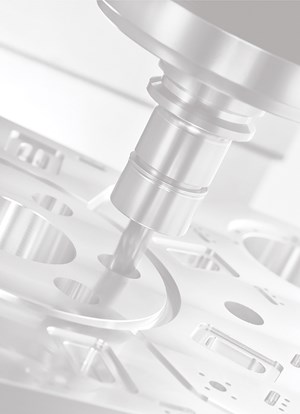Drilling Machine Handles Large Workpieces as Long as 65 Feet
Unisig’s B850 drilling machine, part of the company’s B-series line designed for on-center drilling of round workpieces, features technologies designed to improve performance while reducing cost.
Share



Unisig’s B850 drilling machine, part of the company’s B-series line designed for on-center drilling of round workpieces, features technologies designed to improve performance while reducing cost. The bed and rack-and-pinion system were retained, while feed systems were modernized to improve rigidity and reduce backlash. A new high-performance, helical-geared transmission was incorporated in a three-range, automatically shifting headstock. Modern gearing and powertrain concepts simplified construction of the machine, reducing cost and boosting reliability and performance, the company says.
Both the work and tool headstocks deliver 166 hp, providing the high power and torque needed to drill holes ranging to 7.1" (180 mm) in nickel alloys, 8.7" (221 mm) in carbon steel and 12.6" (320 mm) with counterboring. The B850 is available with maximum drill depths ranging from 78" to 65 ft. (1.98 to 19.81 m), and the machine bed can accommodate workpieces weighing as much as 10 tons (9,071 kg).
The B850 also offers a standard programmable coolant system. Combined with user-friendly controls and the other new design features, the machine allows an operator to focus on the part being machined instead of managing a wide variety of manual functions.
In addition to standard BTA drilling methods, the drilling machine is also capable of counterboring, trepanning, and skiving and roller burnishing processes, achieving strict tolerances. It is suitable for aerospace, defense, and oil and gas applications.
Related Content
-
Shoulder Milling Cuts Racing Part's Cycle Time By Over 50%
Pairing a shoulder mill with a five-axis machine has cut costs and cycle times for one of TTI Machine’s parts, enabling it to support a niche racing community.
-
Understanding Process Damping in Milling Operations
Despite the advances in modeling machining operations over the past decades, process damping remains a topic of interest, including new tool designs that increase the effect.
-
A New Frontier in Surface Finish Control
What if your machine tool could measure surface roughness as it cuts? This article explores how in-process metrology is advancing from concept to reality, enabling real-time feedback, immediate detection of anomalies and new levels of control over surface quality. Discover the technologies making this possible.











-02.jpg;maxWidth=300;quality=90)





.png;maxWidth=300;quality=90)
.png;maxWidth=970;quality=90)